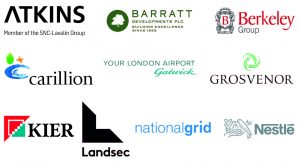Biodiversity Net Gain – Principles and Guidance for UK Construction and Developments
Biodiversity Net Gain is an approach to development that leaves biodiversity in a better state than before. Where a development has an impact on biodiversity it encourages developers to provide an increase in appropriate natural habitat and ecological features over and above that being affected in such a way it is hoped that the current loss of biodiversity through development will be halted and ecological networks can be restored.
Defra has recently consulted on making biodiversity net gain a mandatory element of the English planning system however many developers are already designing net gain into their development projects and national planning policy frameworks already encourage the net gain approach. Quite simply, a policy of no net loss has not worked and we need to do something different if we are to make any progress towards reaching our biodiversity targets.
Biodiversity net gain still relies on the application of the mitigation hierarchy to avoid, mitigate or compensate for biodiversity losses. It is additional to these approaches, not instead of them. Put simply, it involves the use of a metric as a proxy for recognising the negative impacts on habitats arising from a development and calculating how much new or restored habitat, and of what types is required to deliver sufficient net gain.
CIEEM, together with CIRIA and IEMA, has been at the forefront of exploring the potential for a biodiversity net gain approach. In December 2016 we published the first UK Principles on delivering biodiversity net gain through development following extensive consultation with stakeholders. In February 2019 we published new guidance on how to deliver net gain in practice. Development of this practical guidance, together with a series of case studies at a range of scales, were funded by a number of industry sponsors and written by an expert author team. All of these publications are free to download either as a single volume or in parts (see diagram below).
Download the principles and the guidance:
- Biodiversity Net Gain – Good practice principles for development (2016)
- Biodiversity Net Gain – A practical guide (2019)
- Biodiversity Net Gain – Case studies (2019) – also available individually on the Resource Hub
- Biodiversity Net Gain in England – Technical Guide (2024)
Printed copies of the guide are also available.
Biodiversity Net Gain – Principles and Guidance for UK construction and developments – Outline contents
Part A: Introduction
Introduces the topic, followed by a summary ‘in a nutshell’ of what implementing BNG involves at each stage of a project life cycle. |
Part B: Guidance for local planning authorities
Details the benefits, and gives advice on adopting BNG within local plans and planning decisions. |
Part C: The business case for biodiversity net gain
Sets out the business case for commercial organisations of adopting BNG. |
Part D: Implementing the biodiversity net gain good practice principles
Provides guidance for each stage of a development project life cycle. Chapters 6 to 8 provide guidance on QA and Stakeholder Engagement – aspects that relate to all stages of the life cycle, while Chapters 9 to 13 each deal with a specific life cycle stage. |
Part E: Technical notes and case studiesThroughout the guide, policies and processes are introduced or outlined, many of which arecommon to many chapters. For readers requiring additional information on these topics, a set ofeleven technical notes have been produced. During the course of the project, organisations were invited to submit short case studies to illustrate how they are approaching BNG. Many are summarised throughout the guide. The full set has been compiled into a separate publication C776b. Some case studies mention awards or metrics that were applied to the project. However, these have not been subject to any form of audit by CIRIA and are published as submitted, at face value. |
Preliminaries and references |
BNG Training
CIEEM provides a range of training courses for BNG Practitioners.
A note on Environmental Net Gain
Environmental Net Gain (ENG) follows the same ideas as biodiversity net gain but requires developers to deliver a wider range of environmental benefits over and above the full environmental impact of the proposed development (e.g. air quality, flood risk management). We are currently exploring this further with a new task group.
Supporters
We are grateful to the following funders for supporting this project:

Author Team

Delivery Partners

